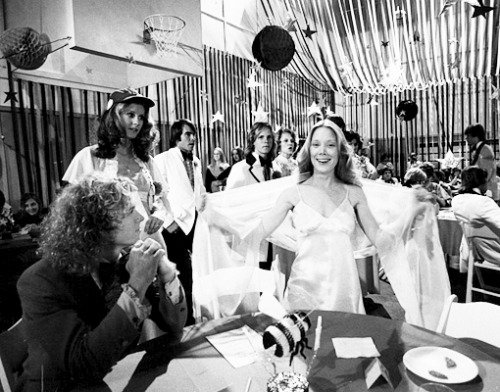PART TWO
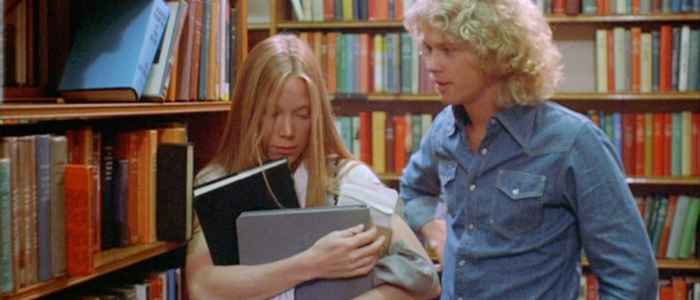
Nate Lam, Before The Cyborgs
Brian De Palma’s Carrie Remains a Horror Classic
Where more traditional horrors films will frame the villain as monsters out to cause destruction or fulfill some psychopathic urge, Carrie sees the villain as human with redeemable qualities. As the film progresses and Carrie's telekinetic powers become increasingly violent she adopts more of an anti-hero persona than one of an actual monster. In essence you almost want her to exact her revenge on her bullies. Selling this capacity to cheer for Carrie is essential to how well the film plays out; a trait that is not as well conveyed in the 2013 remake resulting in an inferior film.Watching this film in 2017 (40+ years after its initial 1976 release), many of the Carrie’s more graphic scenes will seem tame by today’s standards (just compare the prom scenes) but it is not the graphic horror that makes Carrie a cultural touchstone rather it is a product of its progressiveness and De Palma’s sheer brilliance behind the camera. For one, Carrie puts female characters at the forefront - something today’s films still struggle with in their representation of women - and two - Carrie addresses adolescent issues in regards to bullying and identity long before John Hughes would popularize the teen genre in the 80s.
Stephen King would go on to write many more stories after Carrie, many of which would also be adapted for the screen to varying results. He would even return to explore themes of growing up and the challenges associated with that process in works like It and The Body (the basis for Stand By Me) but Carrie stands alone as the work that showcased the beginnings of a world renowned author and what a Stephen King movie could be.
Scott Beggs, Nerdist
Every Stephen King Film Ranked
3. Carrie (1976)
The world’s introduction to King as a writer became the world’s introduction to his stories as films. Before he was a brand, he was an author with a hit, and the success of Brian De Palma’s almost surely set the blood-covered stage for King’s long career in cinema. As the castigated girl with telepathic powers, Sissy Spacek plays Carrie to squirrelly perfection, and Piper Laurie embodies irrational fury as a mother who instills a terror of natural things into the heart of her supernatural daughter. Every scene is mined for discomfort and thematic exploration, finding the nooks and crannies of a girl offered no safe haven from her life. The prom gives us the memes, but the confrontation with her mother afterward is the scene of the film, exorcising all the tiny and gargantuan demons whispered into this young woman’s soul since she had her first period in the locker room showers. That’s two riveting, appalling finales for the price of one.
Parker Bowman, Visalia Times-Delta
Ranking the best and worst Stephen King movies
“Carrie” (1976) — Sissy Spacek was nominated for an Oscar for her titular role in this film about an awkward teen tormented by schoolmates by day and by her religious zealot mother by night. She realizes she can use her psychic powers for revenge, resulting in the split-screen prom climax scene that is synonymous with the film and is one of director Brian De Palma’s finest moments.
Anthony Breznican, Entertainment Weekly
How Stephen King scared a generation of storytellers into existence
There were legitimately great films made from King’s novels in the early days. Brian De Palma’s sleek and stylish 1976 adaptation of King’s first novel, Carrie, helped boost the author’s profile; David Cronenberg blended his brand of psychological dread with King’s in 1983’s The Dead Zone; and Stanley Kubrick’s The Shining is arguably one of the finest horror films in history. (Arguing against that claim is King himself, who strongly dislikes the movie.)Kubrick was dismissive of King in return, telling an interviewer shortly after the movie debuted that he found the novel’s ending “a bit hackneyed,” although earlier in the same conversation he had called the book “one of the most ingenious and exciting stories of the genre.”
This seemed to be the attitude of most sophisticated filmmakers toward King’s early works. There was a stiff-armed approach, an acknowledgment that something meaningful was there, but a crippling condescension toward the horror or supernatural elements, as if the directors were slumming it with material undeserving of serious thought, unless, perhaps, they could elevate it.
King’s work literally scared many good directors away. Those who fully embraced his horror tales, like the makers of TV movies and some of the schlockier pictures, often responded to King’s visceral properties but missed the cerebral.
Manuela Lazic, little white lies
Every Stephen King film adaptation, ranked
1. Carrie (1976)
It seems inevitable that De Palma and King would work together. While King the writer tends to express overblown anxieties about more or less mundane problems through grotesquely exaggerated stories, DePalma the director employs cinematic language to evoke the visceral intensity of such fears, however absurd they may seem.When adapting Carrie, De Palma understood that King’s far fetched story of periods paranoia needed to be translated into simple yet striking images of pure horror in order to bypass ridicule. Using visual style, performance, editing, and a gorgeous soundtrack by regular collaborator Pino Donaggio, De Palma managed to introduce Carrie’s untamed magical powers into the tacky, often amusing but cruel world of high school rivalries, with shocking vigour. Carrie’s outburst is made not only terrifying, but also heartbreaking by the fact that the director let his audience get attached to her suffering at the hands of her classmates, her mother, and her puberty, before unleashing her revenge in a wordless sequence of unforgettable bloodshed.





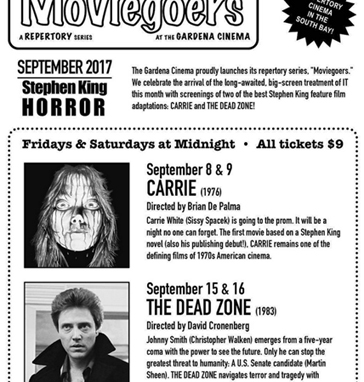
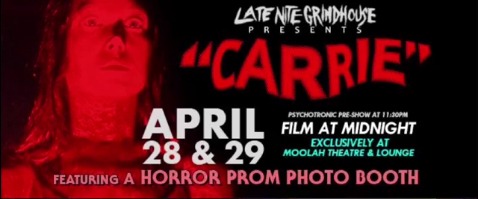
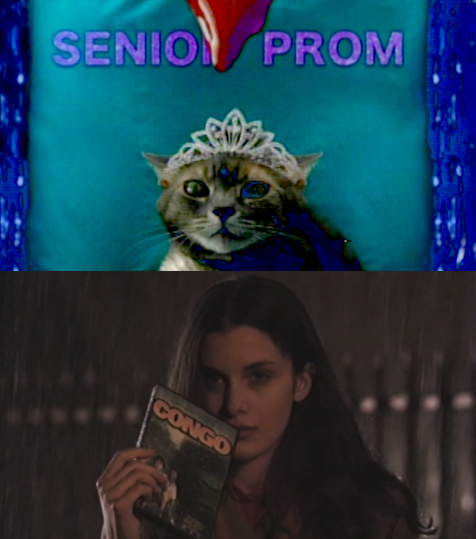
 Piper Laurie will be on hand at the
Piper Laurie will be on hand at the 
